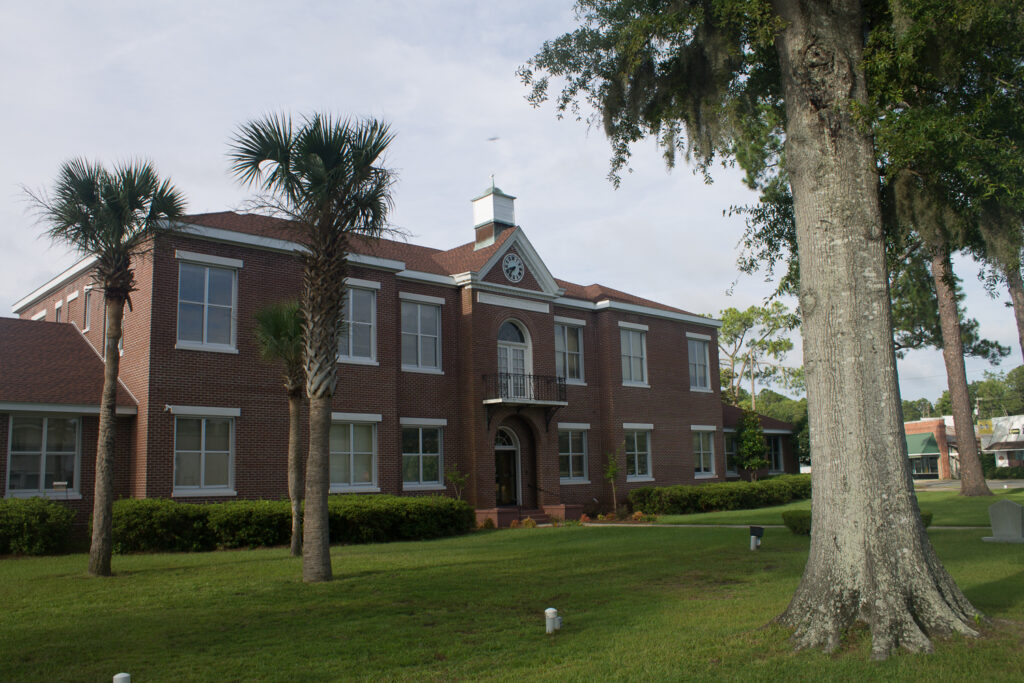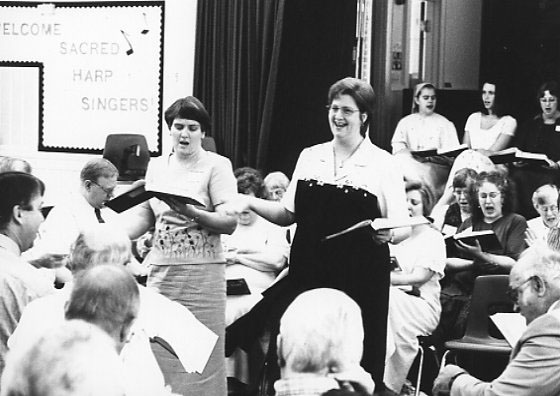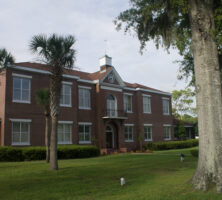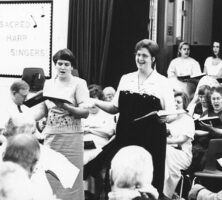In 1920 Brantley County, in southeast Georgia, became Georgia’s 158th county.
Prior to 1920, residents of the area that made up parts of Charlton, Pierce, and Wayne counties felt estranged from their county governments. Most of them lived in hard-to-reach rural areas, far removed from where political decisions were made. In 1919 a group of these dissatisfied Georgians created a “citizens’ committee,” led by local state senator J. K. Larkins, to convince their neighbors and the state legislature to create the new county.
The 444-square-mile county was originally inhabited by the Creek Indians. During the colonial period, the area fell within the bounds of land disputed by the Spanish and the English, a debate settled in favor of the English following the Battle of Bloody Marsh in 1742. The county was named for either Benjamin Daniel Brantley (1832-91), a merchant who encouraged the development of cotton ginning and turpentine manufacturing in the area, or his son, William Gordon Brantley (1860-1934), who served in both houses of the Georgia legislature and in the U.S. House of Representatives.
Soon after the county was created, controversy arose over the choice of the county seat. Senator Larkins and most members of the citizens’ committee were from Hoboken, a thriving community on the west side of the new county. The Brunswick and Western Railroad already ran through the area, and the land in the west was better suited for future industry than the swampland in the east. The only voting booths for the new county’s voters were located at the Hoboken schoolhouse. County residents in the east, claiming that their voting rights were being violated, went to court over the location of the county seat. After three years of court battles and an election, the Georgia General Assembly designated Nahunta, in the east, as the new county seat.

Nahunta, incorporated in 1925, is the second community with this name to be located in the area. Old Nahunta was once a railroad stop west of present-day Nahunta and an important depot for travelers catching trains on the north-south line from Jesup to Folkston. The depot, originally built on stilts because of the area’s swampy ground, was also a social gathering place. Among those who caught trains there were U.S. presidents Calvin Coolidge and Dwight Eisenhower, and the Duke and Duchess of Windsor (after the Duke’s 1936 abdication of the British throne).
Hoboken was incorporated in 1920 and became an early trade center because of its proximity to the railroad. The town may have been named for the New Jersey city, as William A. Martin, who built the town’s first turpentine still, had a coworker from there. Hoboken is well known among Sacred Harp singers for the “Hoboken style,” which is so distinctive that it has been given a place in the Library of Congress Local Legacies project. This unique style points to the extraordinary isolation of Hoboken until recent times.

Other towns in the county include Atkinson, Hickox, Hortense, Lulaton, Trudie, and Waynesville. Hortense, established in the nineteenth century as a timber and turpentine town and flourishing when railroads intersected it in 1902, became the site of the Georgia State Prison Camp in the 1930s. Until it closed in 1944, the prison put its inmates to work constructing roads.
As late as 1950 heavy forest still covered 80 percent of the county’s land, and its inhabitants relied on forest products more than on agricultural products for economic sustenance. An attempt at growing large orchards of Leconte pears in the early 1900s failed because of blight.
According to the 2020 U.S. census, the county population is 18,021.
Among the points of interest are several parks: Confederate Soldiers’ Park in Waynesville; Dixon Memorial State Forest, a 35,708-acre resource shared with Ware County; Harrington Tract Wildlife Management Area, shared with Glynn County; and Rayonier Wildlife Management Area, shared with Wayne County. The Okefenokee National Wildlife Refuge and Wilderness Area spills over into Brantley County on its northeastern side. Also of interest are the Gibson Family Pioneer Home in Waynesville and the Trail Ridge, part of a 130-mile natural trail from the Altamaha River to the Santa Fe River in north Florida that was used by Native Americans and early settlers. Fort Mudge, a fort from the Revolutionary War (1775-83) made famous by cartoonist Walt Kelly in his Pogo comic strips, was on maps for Brantley County until as late as 1955.
Special events include a bluegrass festival every spring and fall, and the Hoboken Trojan Fest.







